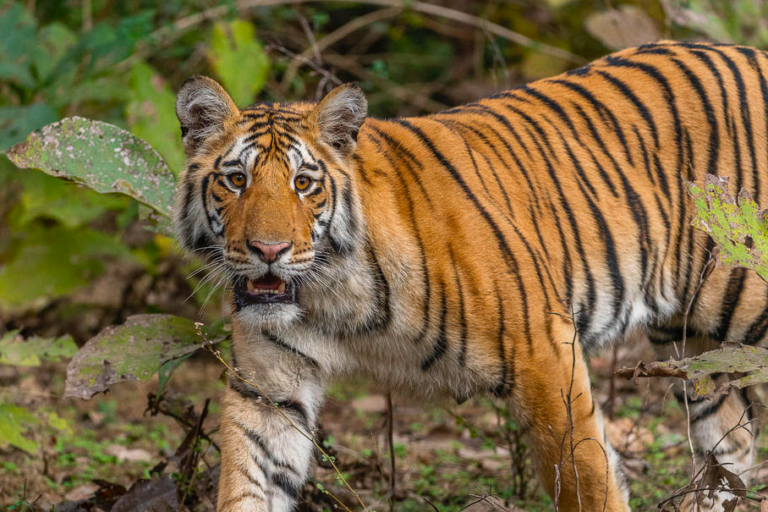Think of a toucan and you’ll probably picture a toco toucan, with its orange bill and white throat. The largest member of the toucan family, the toco toucan (Ramphastos toco) can have a wingspan of more than 1 meter (3 feet) and fly more than 90 meters. On these journeys, it often carries something very precious for the natural regeneration of forests: seeds from the fruit it feeds on.
Like toucans, other species of large frugivorous birds — dusky-legged guans, or jacus (Penelope obscura) and curl-crested jays (Cyanocorax cristatellus), among others — contribute to regenerating tropical forests by dispersing seeds on the ground. In doing so, they help increase a forest’s carbon storage by 38%.
That’s the finding from a new study published in the journal Nature Climate Change by researchers working with the Crowther Lab at the Swiss Federal Institute of Technology in Zurich, or ETH Zurich.
“Reducing deforestation and restoring forests play a fundamental role in decreasing atmospheric carbon and mitigating climate change. However, there are many barriers to large-scale restoration, such as high costs, the level of soil degradation, and the lack of seed banks,” says study co-author Danielle Leal Ramos, an ecologist at São Paulo State University (Unesp).
In tropical forests like the Amazon or the Atlantic Forest, she says, most plant species depend on animals to disperse their seeds. In degraded areas, birds fill in this role by transporting and planting seeds.
“Our aim [with the study] was to quantify the contribution of fruit-eating birds to natural regeneration and the potential accumulation of carbon in degraded areas,” Leal Ramos says.
The researchers analyzed data collected in recent years in the Atlantic Forest by scientists, students, volunteers, ornithologists, field technicians and community members.

Impact of fragmentation on bird movements
All frugivorous birds play an important role in forest regeneration. The difference with larger birds, which can eat larger fruits, is that their seeds will grow into trees with greater biomass.
“Typically, trees with higher wood density produce larger fruits. These trees have a greater potential for biomass accumulation and carbon sequestration. They are large, dense-wooded, and slower-growing trees,” Leal Ramos says.
However, the study indicates that in degraded forests the movement of birds is restricted, leading to less seed dispersal and carbon capture.
In these places, forested patches are small and located far apart. As a result, birds have to make longer flights and are more exposed to predators and extreme weather conditions when going from one stretch of forest to another — a problem for species that are used to denser vegetation.

“To ensure effective bird-mediated seed dispersal, it is essential to maintain at least 40% forest cover and to keep forest fragments at a distance of no more than 133 meters,” says study lead author Carolina Bello, a postdoctoral researcher at the Crowther Lab.
The study underlines the importance of the balance between fauna and flora for the preservation and restoration of tropical forests. In order for them to remain diverse and efficient, with their ecosystem services functioning, the role of animals in this process must be taken into account.
“Passive restoration is more economical than active restoration [planting trees], as it is cheaper and produces more diverse forests with greater carbon storage potential,” Bello says. “But for it to be successful, we need to ensure that animals contribute to it.”
More intense in the Amazon
Although the Atlantic Forest is considered to be the most devastated of the Brazilian biomes, with just over 10% of its original forests remaining, a previous study points out that the decrease in carbon storage due to the loss of large frugivorous species is greater in the Amazon Rainforest, especially when taking into account not only birds but also primates and mammals, such as tapirs (Tapirus terrestris) and peccaries (Tayassu pecari and Pecari tajacu).
“The Amazon Rainforest and the Atlantic Forest are tropical forests where frugivorous species are very important,” Bello says. She adds the Amazon region has faced a process of severe deforestation in recent years, leaving highly fragmented landscapes where the movement of birds is also affected.

“It is to be expected that the effects observed in this study for the Atlantic Forest will also be observed in the Amazon, but we need a more precise assessment to understand the magnitude of the effect,” Bello says. “Due to the higher proportion of trees that require animals for their dispersal in the Amazon, we can expect birds to be even more indispensable for restoration there, but we still need to assess the compensatory effect of other groups of animals.”
The conservation and restoration of large forests is essential for combating climate change. Trees capture climate-warming carbon dioxide from the air and convert it into oxygen and plant material through photosynthesis. With birds flying less and dispersing fewer seeds, we risk having fewer trees on the ground and more carbon in the atmosphere.
Citation:
Bello, C., Crowther, T. W., Ramos, D. L., Morán-López, T., Pizo, M. A., & Dent, D. H. (2024). Frugivores enhance potential carbon recovery in fragmented landscapes. Nature Climate Change, 14(6), 636-643. doi:10.1038/s41558-024-01989-1
Peres, C. A., Emilio, T., Schietti, J., Desmoulière, S. J., & Levi, T. (2016). Dispersal limitation induces long-term biomass collapse in overhunted Amazonian forests. Proceedings of the National Academy of Sciences, 113(4), 892-897. doi:10.1073/pnas.1516525113
This article by Suzana Camargo was first published by Mongabay.com on 14 June 2024 | Translated by Carol de Marchi and André Cherri. Lead Image: The red-breasted toucan (Ramphastos dicolorus), found in tree canopies mainly in mountainous areas of the Atlantic Forest, feeds on native fruit such as embaúba, pitangueira and juçara. Image by Cláudio Dias Timm via Wikimedia Commons (CC BY-SA 2.0).
What you can do
Help to save wildlife by donating as little as $1 – It only takes a minute.







Leave a Reply